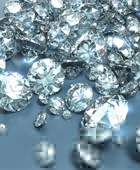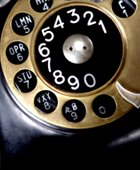Diamonds are not only symbols of luxury and beauty but also valuable financial assets. Whether acquired for personal enjoyment, investment, or sentimental reasons, protecting these precious gemstones is essential. Diamond insurance provides financial security in case of theft, loss, or damage. However, insuring diamonds is not as straightforward as insuring everyday possessions—it requires careful evaluation of policies, appraisals, and understanding coverage limitations. This comprehensive guide will explain the importance of diamond insurance, the different types of policies available, the appraisal process, and the factors that influence insurance premiums.

1. Why Insure Your Diamonds?
Many individuals overlook the importance of insuring their diamonds, assuming that they are covered under general homeowner’s or renter’s insurance. However, these policies typically have limitations on high-value items, often requiring additional coverage. The key reasons for insuring diamonds include:
- Financial Protection: A diamond represents a significant financial investment. Losing or damaging it can result in a substantial monetary loss without proper coverage.
- Theft Protection: Jewelry is a common target for theft, and having insurance can mitigate financial setbacks.
- Loss and Misplacement: Unlike other valuables, diamonds are small and can easily be lost. Many insurance policies cover accidental loss.
- Damage Coverage: Despite their hardness, diamonds can still chip or crack. Some policies provide coverage for damage caused by accidents.
2. Types of Diamond Insurance Policies
There are different ways to insure your diamonds, depending on your needs and the level of protection you require. The two primary methods include:
A. Homeowner’s or Renter’s Insurance Riders
Standard homeowner’s and renter’s insurance policies include some jewelry coverage, but the amount is typically limited (e.g., $1,000 to $2,500). If your diamonds exceed this value, you can add a rider (endorsement) to extend the coverage.
- Pros: Convenient as it is added to an existing policy; may offer coverage for theft and loss.
- Cons: Often has coverage limits; may not cover all risks, such as accidental loss.
B. Standalone Jewelry Insurance
Dedicated jewelry insurance provides more comprehensive coverage than a homeowner’s policy add-on. These policies are specifically designed for high-value jewelry items and can cover theft, loss, accidental damage, and even disappearance.
- Pros: More comprehensive coverage; often includes worldwide protection.
- Cons: Requires a separate policy; premiums can be higher than riders.
C. Specialized High-Value Insurance Policies
For extremely valuable diamonds, luxury insurance providers offer specialized policies that provide extensive coverage, including market fluctuations and high-value claims.
- Pros: Designed for collectors and investors; customizable coverage options.
- Cons: More expensive; may require stringent documentation.
3. Understanding Coverage: What is Included and Excluded?
Insurance policies differ in their level of coverage. Before selecting a policy, it is crucial to understand what is included and excluded.
Typical Inclusions:
✔ Theft Coverage – If your diamonds are stolen, the policy reimburses their value.
✔ Loss Protection – Coverage includes accidental loss, such as misplacing a ring.
✔ Damage Coverage – Includes chipping, cracking, or other physical damage.
✔ Mysterious Disappearance – Some policies cover cases where the jewelry vanishes without explanation.
✔ Travel Coverage – Some policies offer worldwide protection if the diamond is lost or stolen abroad.
Common Exclusions:
❌ Wear and Tear – Gradual deterioration due to aging is typically not covered.
❌ Negligence or Intentional Loss – If loss occurs due to careless handling, the claim may be denied.
❌ Market Depreciation – Most policies cover the replacement value but may not compensate for investment fluctuations.
❌ Non-Disclosed Damage – Pre-existing damage before the policy was issued is not covered.
4. The Diamond Appraisal Process: Determining Insurance Value
To insure a diamond, you must first determine its value through a professional diamond appraisal. This step is critical, as the insurance payout depends on an accurate valuation.
A. What is a Diamond Appraisal?
A diamond appraisal is a formal document that provides a detailed assessment of a diamond’s characteristics and market value. This report includes:
- Carat weight
- Cut, color, and clarity (4Cs)
- Fluorescence and polish
- Current market value
- Photographs and serial numbers (if applicable)
B. Where to Get a Diamond Appraisal?
- Certified Gemologists: Professionals certified by organizations like GIA (Gemological Institute of America) or AGS (American Gem Society).
- Jewelry Stores: Many jewelers offer appraisals, but it’s crucial to choose a reputable one.
- Independent Appraisers: Unaffiliated appraisers provide unbiased valuations.
C. How Often Should You Update Your Appraisal?
Diamond values fluctuate over time due to market changes. It is advisable to update your appraisal every 2-3 years to ensure that your insurance reflects the diamond’s current worth.
5. How Insurance Companies Calculate Premiums
Diamond insurance premiums vary based on several factors:
- Value of the Diamond: Higher-value diamonds have higher premiums.
- Location: Areas with higher crime rates may result in increased premiums.
- Type of Coverage: Comprehensive policies cost more than basic riders.
- Deductible Amount: A higher deductible lowers the premium, but you pay more out of pocket in case of a claim.
- Security Measures: Keeping diamonds in a safe or having a home security system may reduce premiums.
6. Choosing the Right Diamond Insurance Provider
Not all insurance companies offer the same level of service, coverage, or pricing. Selecting the right insurer requires careful evaluation of their reputation, policy details, and customer service.
A. Factors to Consider When Selecting an Insurance Provider
When choosing an insurer, consider the following:
- Specialization in Jewelry Insurance: Some companies focus specifically on jewelry insurance and offer better coverage options.
- Reputation and Customer Reviews: Look for insurers with positive reviews and strong customer service ratings.
- Claim Processing Efficiency: Check how quickly claims are processed and how the company handles payouts.
- Flexibility in Coverage: Ensure the policy covers a wide range of risks, including loss, theft, and accidental damage.
- Global Coverage Options: If you travel frequently, ensure that your insurance provides international coverage.
B. Well-Known Jewelry Insurance Providers
Some well-known companies specializing in jewelry insurance include:
- Jewelers Mutual Insurance Group – A leading provider specializing in jewelry insurance.
- Chubb Insurance – Offers high-value asset insurance, including jewelry.
- Lavalier Jewelry Insurance – Provides standalone jewelry insurance with competitive rates.
- Homeowner’s Insurance Providers – Companies like State Farm, Allstate, and USAA offer jewelry riders.
7. The Diamond Insurance Claims Process
Understanding how to file an insurance claim can make the process smoother in case of loss, theft, or damage.
A. Steps to File a Claim
- Report the Loss or Theft: If your diamond is stolen, report it to the police and obtain a police report.
- Contact Your Insurer: Notify your insurance company as soon as possible.
- Provide Documentation: Submit necessary documents, such as the diamond’s appraisal report, purchase receipt, and photographs.
- Complete Claim Forms: Fill out required claim forms and provide detailed information about the incident.
- Undergo Investigation (if required): Some claims may require further verification or investigation.
- Receive Reimbursement or Replacement: Depending on the policy, the insurer may either provide financial compensation or a replacement diamond.
B. Factors That Affect Claim Approval
- Policy Adherence: Claims may be denied if the policyholder fails to comply with policy terms.
- Proof of Ownership: Keeping updated appraisals and purchase receipts is crucial.
- Type of Coverage: Some policies only cover specific scenarios, so reviewing your policy details is essential.
8. Tips for Maximizing Your Diamond Insurance Coverage
To get the best protection for your diamonds, consider the following strategies:
A. Maintain Updated Appraisals
Regularly update your diamond appraisal to ensure that your insurance reflects its current market value.
B. Keep Proper Documentation
Store important documents such as:
- Appraisal reports
- Purchase receipts
- Photographs of the diamond
- Certification from gemological labs (e.g., GIA, AGS)
C. Choose a Suitable Deductible
A higher deductible can lower your premiums, but it means you will pay more out of pocket when filing a claim. Choose a balance that suits your financial situation.
D. Verify Replacement Policies
Some insurers may replace lost diamonds with “equivalent” stones. Ensure that your policy specifies a replacement of equal quality and characteristics.
E. Review Your Policy Regularly
Your insurance needs may change over time. Regularly reviewing your policy ensures that it continues to meet your expectations and needs.
9. Additional Ways to Protect Your Diamonds
Beyond insurance, there are other precautions you can take to safeguard your diamonds.
A. Secure Storage
- Use a home safe that is fireproof and burglar-resistant.
- Store high-value diamonds in a bank safety deposit box when not in use.
B. Use Smart Tracking Technology
Modern jewelry tracking solutions, such as RFID tags or smart jewelry boxes, can help you keep track of your valuables.
C. Regular Inspections and Maintenance
- Have your jewelry inspected by a jeweler annually to check for loose settings or damage.
- Get repairs done promptly to prevent further damage.
D. Travel Precautions
When traveling with diamonds:
- Use a discreet travel case.
- Avoid carrying valuable jewelry in checked luggage.
- Use hotel safes to store jewelry when not wearing it.
10. Final Thoughts
Diamond insurance is a crucial investment that ensures financial protection against loss, theft, or damage. Understanding policy types, the claims process, and additional security measures allows you to make informed decisions when insuring your diamonds. By choosing the right insurer, maintaining updated appraisals, and taking proactive security measures, you can effectively safeguard your diamond investment for years to come.




